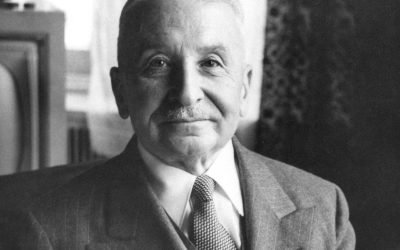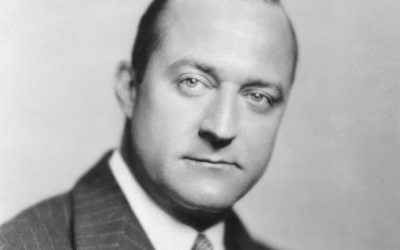As for the translation of this process of innovation into terms of physical increases in production, it is probably self-evident that the introduction of new and/or improved products constitutes an increase in production or is a source of an increase in production. One has only to think of such cases as the automobile replacing the horse and buggy, or the automobile with the self-starter replacing the hand-cranked automobile, or such cases as the tractor bringing about a vast increase in the production of agricultural products, or the electric motor bringing about a vast increase in the production of all kinds of manufactured goods. It may be less obvious, however, how the day-by-day attention of businessmen to costs, and their constant efforts to reduce the costs of production, are an equally important source of the increase in production. Still less obvious is the role in increasing production that is played by correct anticipations of changes in consumer demand. Therefore, let us briefly consider the contribution of these factors to increasing production.
***
Reducing the costs of production means, for the most part, that one finds a way to produce the same amount of a good with less labor. This acts to increase production because it makes labor available to produce more of this good or more of other goods, somewhere else in the economic system. The saving of labor is clearest in the case in which the businessman achieves the cost reduction by employing labor-saving machinery. But even if the cost reduction is achieved by finding a way to use less of some material or a less costly material, labor will also be saved. If less of a material is required, less labor is required to produce the smaller quantity of the material. If a less costly material is required, it is probable that labor will be saved, since it is probable that the less costly material is less costly because less labor is required to produce it. To this extent, then, saving costs means saving labor and, therefore, making the means available for increasing production.
Even if a saving in the quantity of labor is not involved in a cost reduction, the ability to produce something with a less costly material, or with less costly labor for that matter—say, unskilled labor in place of skilled labor— still brings about a net increase in total production. What happens in these cases is that the more costly material or labor is released to expand the production of something else which is comparatively important, while the less costly material or labor that replaces it is withdrawn from the production of something else which is comparatively unimportant.
The principle here is perhaps best illustrated by the case of employing nurses and other aides for many of the tasks that would otherwise have to be performed by doctors. What is gained is the added work that can only be performed by doctors and which otherwise would have been impossible for lack of availability of doctors’ time. What is lost is only the work that the nurses or whoever might have performed as secretaries, bookkeepers, or whatever. Every substitution of less costly labor for more costly labor is comparable to this case in its effect. The same applies to the substitution of less costly for more costly materials. In this way, a net economic gain, equivalent to an increase in production, takes place, because the production of something more important, that is, something with higher marginal utility, is increased at the expense of the production of something less important, that is, something with lower marginal utility. As far as labor goes, the ability to substitute unskilled for skilled labor and achieve equal results can also be viewed as the equivalent of increasing the intelligence and ability of workers, which in the very nature of the case must increase production.6
The correct anticipation of changes in consumer demand is also a necessary part of the process of increasing production. To understand this point, it must be realized that increases in production are one of the most important causes of wide-ranging changes in the pattern of consumer spending. For example, the steady improvements in agriculture and the consequent drop in the proportion of people’s income that has had to be tied up in buying food has made possible a continuously growing demand for the whole range of industrial goods. Similarly, the introduction and development of the automobile brought about far-reaching shifts in demand: it made possible the development of the suburbs and a whole host of new businesses from gas stations to motels; expanded the demand for other businesses, such as ski resorts; reduced the demand for passenger railroads and horses; and virtually destroyed the businesses of buggy making and blacksmithing. Every improvement in production exercises a similar, if less dramatic, effect on the demand for other goods.
In order for these shifts in demand to be accompanied by corresponding shifts in production, it is necessary for wide-ranging changes in the investment of capital to occur. Thus, to continue with the examples of agriculture and the automobile, capital had to be diverted from agriculture to industry, from cities to suburbs, from railroads, horse breeding, buggy making, and blacksmithing, to automaking, gas stations, motels, and ski resorts. To the extent that the appropriate shifts of capital did not occur, or occurred with undue delay, the benefit from the improvement in production was lost. For example, to the extent that capital was not shifted out of farming rapidly enough—as a result of government farm subsidies or the inertia of many farmers—the effect of the improvements in agriculture was limited to a relatively unwanted increase in agricultural production and correspondingly less of an increase in much more desired industrial production. Similarly, to the extent that capital would not have been shifted rapidly enough out of buggy making and horse breeding, the benefits from the automobile would have been held down: capital would have been wasted in buggy making and horse breeding which could have been employed with infinitely greater benefit in any of the new or expanding industries brought about by the automobile. In all such cases, to fail to make the appropriate shifts of capital is to lose some or all of the benefit of the improvement in production. For this reason, the correct anticipation of changes in consumer demand is an integral part of the process of increasing production.
* * *
I have established that the effect of the quest for an above-average rate of profit in the face of the operation of the uniformity-of-profit principle is to bring about the steady improvement and enlargement of production. The inescapable implication of this fact is a powerful tendency for prices to fall from year to year. It is necessary to reconcile this implication with the fact that based on the experience of almost everyone now living the reality appears to be that prices rise virtually every year.
The fall in prices that the profit motive has actually achieved can be clearly seen if prices are calculated not in terms of depreciating paper money, but in terms of the amount of labor that the average worker must perform in order to earn the means of buying any given quantity of goods. Today, the average worker performs perhaps forty hours of labor in a week and is able to obtain the goods that constitute his present standard of living. As we look back in time, however, we see that the hours of work that had to be performed were greater, and the goods constituting the average worker’s standard of living were less. Thus, as time has gone on, and the average worker has come to receive more and more while working less and less, the quantity of goods he can obtain for each hour of his labor has increased. To say the same thing in different words, the amount of labor he must perform in order to obtain a unit of goods has steadily decreased. In this sense, prices—calculated in terms of the quantities of labor that must be performed in order to buy goods—actually have fallen steadily as the result of the operation of the profit motive.
The fact that in terms of paper money, prices have risen is the result of the fact that while prices of goods really do tend to fall because of the operation of the profit motive, the value of the paper money tends to fall still faster. When falling prices are expressed in a standard that itself falls even more rapidly (which is the case with paper money), they have the appearance of having risen. The following illustration will make this point obvious. In the early 1970s, a primitive four-function pocket calculator sold for about $400. At the same time, a fairly primitive videotape recorder sold for about $2,400. Thus, at that time, it took 6 pocket calculators to represent the price of one videotape recorder. Today, the price of a much-improved video tape recorder is about $400— which certainly represents a radical drop. But today, the price of a comparable pocket calculator is only about 6 For elaboration and related discussion of these points, see below, the present chap., pt. B, secs. 3–5. $10. Thus, today, it takes 40 pocket calculators to equal the price of a videotape recorder instead of only 6. When the lower price of the video tape recorder is expressed in terms of pocket calculators, it appears to have risen instead of fallen, because the price of the pocket calculators has fallen so much more.
Exactly this principle applies to the rise in prices in terms of paper money. While the profit motive operates to reduce the prices of the mass of commodities and does in fact succeed in reducing them when expressed in any kind of reasonably fixed standard of value, the value of paper money falls even more rapidly and so gives the appearance that things have become more expensive instead of less expensive.
This result can be further understood if we realize that paper money is actually among the cheapest goods in the world to produce in the first place. It starts out with a virtually zero cost of production. If its production were open to the freedom of competition, so that anyone in possession of the appropriate paper and printing plates was allowed to manufacture it, its value would quickly be driven down to the value of goods with a comparable cost of production, such as pieces of note paper and pins. Indeed, its value would even be less, because it would not have the actual physical utility of such goods, and the need to carry vast quantities of it to buy other goods would destroy its usefulness as money. In other words, under the freedom of competition, the profit motive would soon make paper money absolutely worthless. All other goods would be worth an infinite quantity of it. The value of paper money is not destroyed this quickly, because its creation is a monopoly privilege of the government. But even so, as we shall see, the government has powerful incentives to increase the quantity of paper money at a substantially more rapid rate than the scientists, inventors, businessmen, and savers and investors are able to increase the supply of goods.7 The result is that while the productive work of these most intelligent and ambitious members of society may succeed in an average year in increasing the supply and thus tending to reduce the prices of goods by, say, three, four, five percent, or whatever, the government is easily able to outstrip their performance and increase the quantity of money and volume of spending in the economic system by a larger amount, with the result that prices rise instead of fall.
Summary of the price system
To summarize the discussion of the price system thus far: The desire of businessmen to earn profits and avoid losses, and to earn higher profits in preference to lower profits, brings about a tendency toward a uniform rate of profit on capital invested in all the different branches of industry. The operation of this tendency counteracts, delimits, and largely prevents mistakes from being made in the relative production of the various goods. Because of it, consumers have the power of positive initiative to shift the course of production simply by changing the pattern of their spending; because of it, businessmen are made to act virtually as the consumers’ agents. The operation of the tendency toward a uniform rate of profit requires that high profits be made by continuously introducing productive innovations in advance of competitors. These innovations are the base of a continuous increase in production, whether they take the form of new and improved products, reduced costs of production, or correct anticipations of changes in consumer demand. As such, they operate continuously to raise the average standard of living. They steadily enlarge and improve the goods available while reducing not only the amount of work that must be performed in order to produce any given quantity of goods but also the amount of work that must be performed in order to buy any given quantity of goods. In other words, they make possible progressively improved products at prices corresponding to progressively falling real costs of production.
On the basis of the foregoing, we must conclude that the profit motive and the price system of capitalism have been responsible for virtually all of the economic progress of the last two hundred years or more. They have ensured the maximum possible effort to introduce innovations and to extend their application as rapidly as possible, with the result that in comparatively short periods of time revolutionary improvements have become commonplace. Because of this and because of the rapid adaptation they assure to all changes in economic conditions, they have rendered every crisis, from natural disasters, to wars, to absurd acts of government, a merely temporary setback in a steady climb to greater prosperity.
This series is adapted from Reisman’s Capitalism: A Treatise on Economics, Chapter 6, The Dependence of the Division of Labor on Capitalism, “The Impetus to Continuous Economic Progress.”




